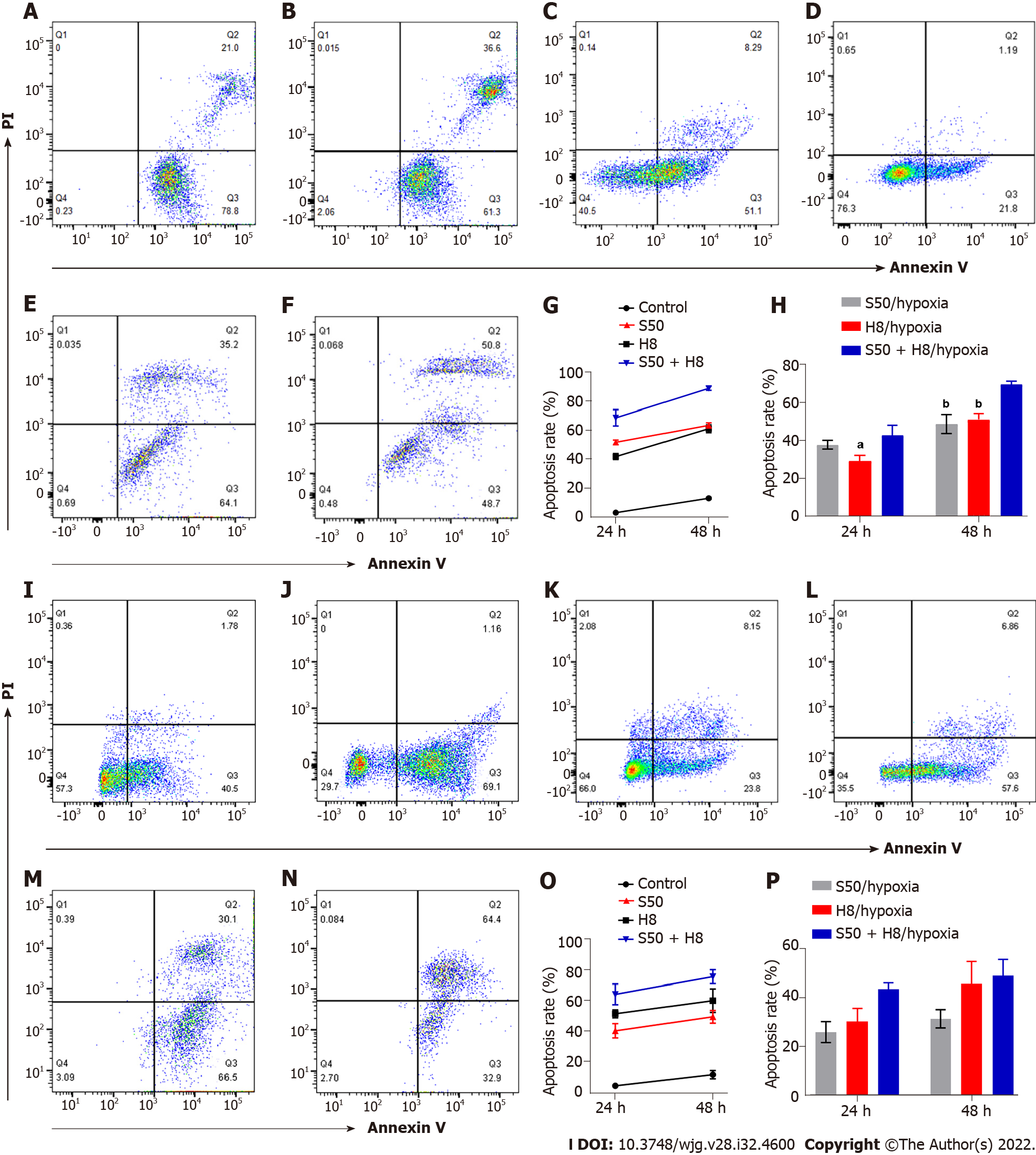Copyright
©The Author(s) 2022.
World J Gastroenterol. Aug 28, 2022; 28(32): 4600-4619
Published online Aug 28, 2022. doi: 10.3748/wjg.v28.i32.4600
Published online Aug 28, 2022. doi: 10.3748/wjg.v28.i32.4600
Figure 3 Effects of sirolimus and Huai Er on apoptosis of HepG2 and Huh 7 cells under normoxic and hypoxic conditions.
A-F: Scatter diagrams of apoptosis of HepG2 cells intervened with sirolimus (SRL) (A), with Huai Er (B), with SRL under hypoxia (C), with Huai Er under hypoxia (D), with S50 + H8 under normoxia (E), and with S50 + H8 under hypoxia (F); G and H: Apoptosis rates of HepG2 cell at 24 h and 48 h under normoxia (G) and under hypoxia (H); I-N: Scatter diagrams of apoptosis of Huh 7 cells intervened with SRL (I), with Huai Er (J), with SRL under hypoxia (K), with Huai Er under hypoxia (L), with S50 + H8 under normoxia (M), and with S50 + H8 under hypoxia (N); O and P: Apoptosis rates of Huh 7 cells at 24 h and 48 h under normoxia (O) and under hypoxia (P). aP < 0.01 vs H8 + S50/hypoxia; bP < 0.001 vs H8 + S50/hypoxia; cP < 0.05 vs H8 + S50/hypoxia. H8: 8 mg/mL for Huai Er; S50: 50 nM for SRL.
- Citation: Zhou L, Zhao Y, Pan LC, Wang J, Shi XJ, Du GS, He Q. Sirolimus increases the anti-cancer effect of Huai Er by regulating hypoxia inducible factor-1α-mediated glycolysis in hepatocellular carcinoma. World J Gastroenterol 2022; 28(32): 4600-4619
- URL: https://www.wjgnet.com/1007-9327/full/v28/i32/4600.htm
- DOI: https://dx.doi.org/10.3748/wjg.v28.i32.4600









